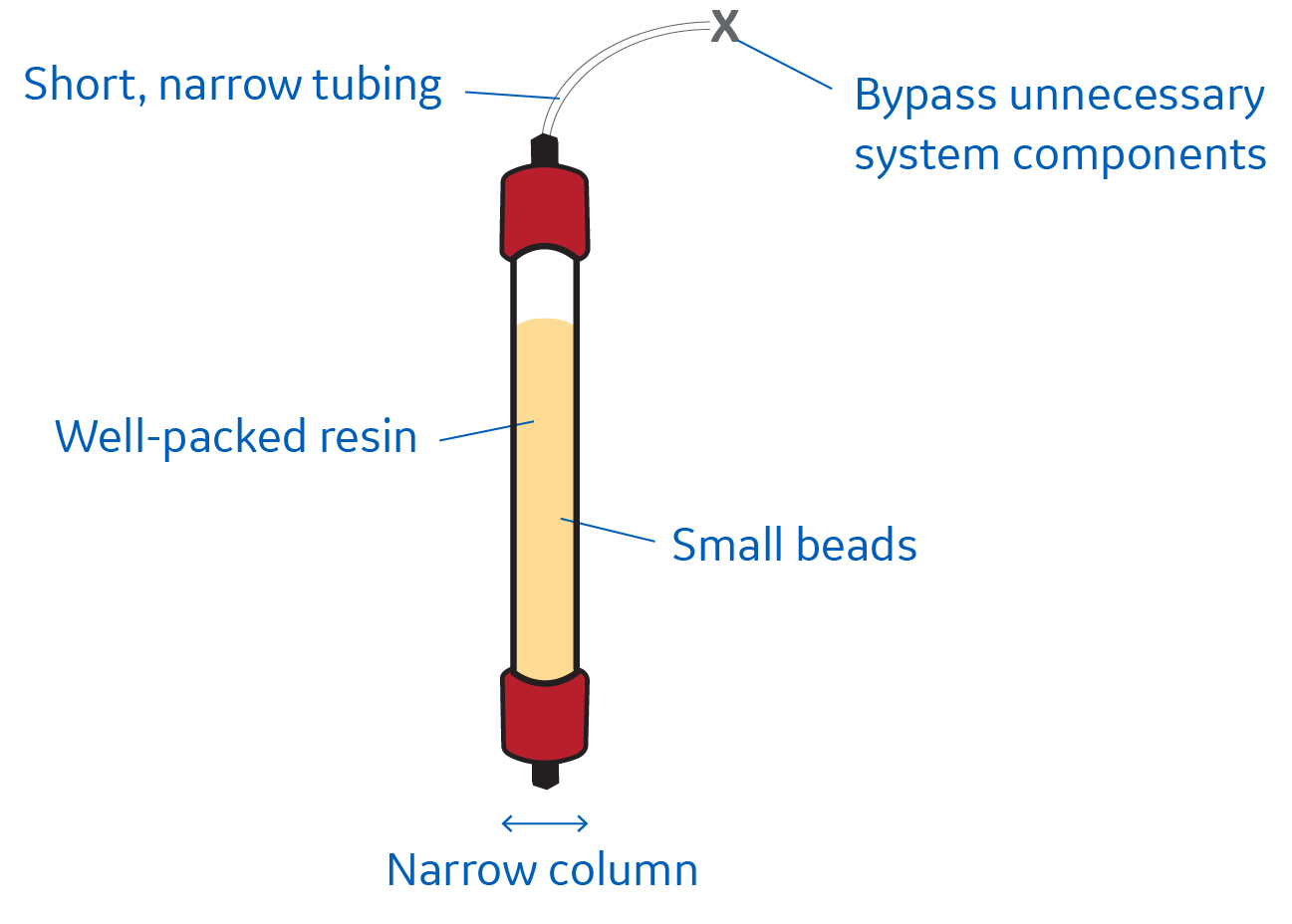High resolution in HPLC is not achieved by applying back pressure to the column. Let’s straighten out what really helps you achieve high-resolution analytical SEC data.
So, why the back pressure in analytical SEC?
When you do protein characterization with size exclusion chromatography (SEC), a resin with small beads will help you achieve high resolution. It’s actually the small beads that generate the back pressure when liquid flows through the column.
In other words, the back pressure is not causing the high resolution. Rather, it’s a side effect from using small resin beads. And the beads are one of the key reasons for the high resolution.
These are the main factors that influence resolution
In analytical SEC, resolution depends on the selectivity of the resin and the efficiency of the column to produce narrow peaks.
- Selectivity is the distance between the peaks. It depends on the interaction between the sample and the resin.
- Efficiency depends on many factors. The main ones are bead size, column format, and column packing.
Small bead and narrow, well-packed columns will give excellent resolution. But, as small beads generate high back pressure, remember to use a quite low flow rate to keep the pressure down.
Another tip is to use short, narrow tubing and also bypass unnecessary system components. That way you minimize dilution of the sample and a higher sample concentration will give better resolution.
Resin, run, and system—keep this in mind for higher SEC resolution
The five factors mentioned have great influence on the resolution in analytical SEC. But there are several other resin properties, running conditions, and system configurations to weigh in as well. Check out Table 1 for a summary.
Table 1. Overview of resin properties, running conditions, and system configurations that influence resolution in protein analysis
| Resin | Run | System |
|
|
|
As you can tell, there are several ways to improve resolution when you perform protein characterizations. But applying a high back pressure is definitely not one of them.
If you want to learn more, just download the white paper on protein analysis with SEC.
